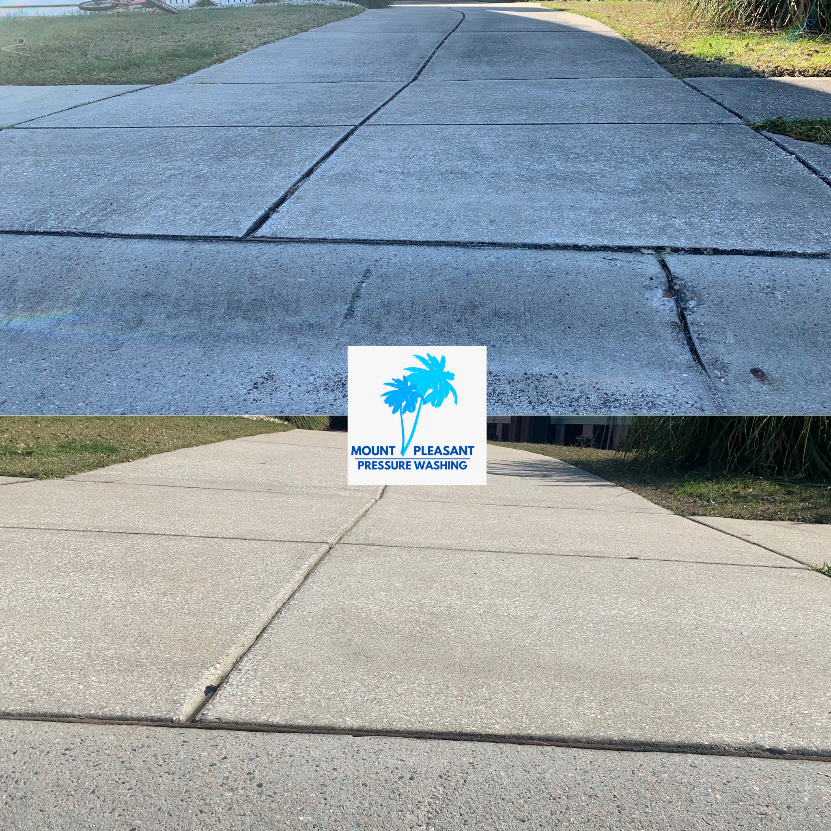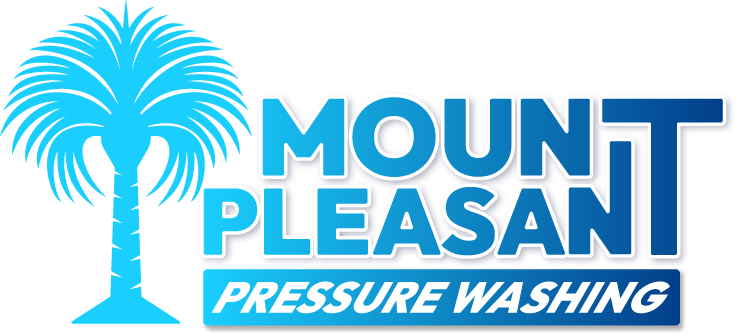Advantages of Cleaning Concrete with Muriatic Acid
- Removes oil stains and rust stains. You can remove oil stains with degreasers and rust stains with other acids, such as oxalic acid, but muriatic acid can remove both with surprising efficiency.
- Brightens concrete. When cleaning with basic pH chemicals such as sodium hypochlorite, you remove dirt, mold, and algae from surfaces easily, but do not get the brightening effects acidic pH chemicals, such as muriatic acid, provide. Muriatic acid can provide that bright white look that new concrete often has.
- Removes mineral stains. Common mineral stains on concrete are calcium and efflorescence, and muriatic acid can remove both. You often see this white mineral deposit around cracks in the concrete, usually accompanied by rust stains underneath. Muriatic acid is a powerful cleaner in that it can remove multiple kinds of stains at the same time.
- Removes paint splatter. Paint splatter on concrete gets more difficult to remove as time goes on. Quickly removing paint splatter with muriatic acid can remove paint stains just as good as paint strippers, such as sodium hydroxide or TSP.
Disadvantages of Cleaning Concrete with Muriatic Acid
- It can damage surfaces if not diluted carefully. Muriatic acid comes in bottles of concentrate that is much stronger than what you would need to clean concrete. It is important when diluting muriatic acid to add muriatic acid to water, not add water to muriatic acid. Adding water to a bottle of concentrated muriatic acid can cause an explosion.
- Can damage plant life. Being a strong acid, muriatic acid can damage plant life if landscaping is not thoroughly pre-soaked with water before doing any cleaning. Having poor drainage systems, especially where water pools up around delicate plants like rose bushes and Japanese maples, can cause the plants to uptake any active muriatic acid and kill them.
- Can be dangerous to you. Always wear the appropriate personal protective equipment (PPE) such as gloves, long sleeve clothing, eyewear, and a respirator. We highly recommend a respirator for using muriatic acid to clean concrete as the fumes will travel upward from the concrete toward your airways.
Step-by-Step Cleaning Concrete with Muriatic Acid
- Protect yourself and your landscaping. Personal safety is number one in any exterior cleaning endeavor. Get started by hopping into your personal protective equipment. With a garden hose, go around and pre-soak any landscaping and plants with water to hydrate the cells within. Soaking the surrounding soil will also dilute the cleaning solution upon contact.
- Mix your muriatic acid. We recommend starting your dilutions at 50:1 and moving to 20:1 as needed. In terms of a gallon, these means adding about 3 ounces of muriatic acid to a gallon of water. You can add an additional 3 ounces of acid if needed, but don’t add over that much. High concentrations of muriatic acid can etch concrete, glass, remove paint, dull chrome, and cause other issues. Below is a summary of how much to add to a gallon of water:
- Heavy cleaning: 3 ounces of muriatic acid to one gallon of water.
- Light cleaning: 6-7 ounces of muriatic acid to one gallon of water.
- Start cleaning. Begin applying an even coating of muriatic acid using a pump sprayer to the entire pad of concrete. Do not spot clean with muriatic acid, as the concrete will be brighter where the area was cleaned compared to the rest of the concrete. You should notice a visual change on the concrete if the solution is working. Here are some signs of effective cleaning with muriatic acid:
- Algae and microbes: Dirt and grime should go from green and black to white and brown.
- Rust: Orange rust stains should turn to a yellow color and be removed easily with rinsing.
- Concrete: Concrete should go from yellow tint to a brighter white tint.
- Mineral stains: Calcium deposits should start to bubble or fizzle upon contact with muriatic acid. Agitation with a brush may speed this process up.
- Paint: Light paint splatter should begin to run colors in the stream of water, or it should start to shrivel up and become easy to scrape away.
- Oil: Oil stains should go from a black to brown color upon scrubbing and contact with the chemical mixture.
- Pressure wash or rinse with garden hose. Pressure washing concrete is more of an art form than a science. Get a 15- or 25-degree fan tip, better yet, a turbo nozzle or surface cleaner. Start by pressure washing the entire concrete pad in even lines to get a smooth, symmetrical looking result. If you are working with rust stains or paint stains, we recommend first rinsing those areas off with a 40-degree fan tip or garden hose. Once you pressure wash all of the dirt and grime on one concrete pad, rinse the debris away to keep it from settling back into the concrete. Repeat these steps on the next section.
- Pro-tip: If you notice surface cleaner lines, move a bit slower during pressure washing or post-treat with a solution of 1 part bleach to 4 parts water to remove those stripes and have a smooth, even finish on the concrete.
Expected Results and Summary
Cleaning concrete with muriatic acid can be a highly effective solution if used correctly, providing ultra-bright white concrete and removal of many types of stains. In one application, you can remove rust stains, oil stains, algae, and paint splatter with a quick chemical application followed by pressure washing.
If at any point you feel uncomfortable or unsure how to use muriatic acid and pressure washing equipment, take some time to review the instructions for all your products. If you would rather not deal with strong acids, outdoor power equipment, and a long weekend laboring away, call the professionals at Mount Pleasant Pressure Washing.
We specialize in all types of acid washing, pressure cleaning, and soft washing methods that provide exceptional results time and time again. From world-class training instructed by 40+ year professionals to state-of-the-art equipment, Mount Pleasant Pressure Washing delivers the best clean in the Lowcountry.

